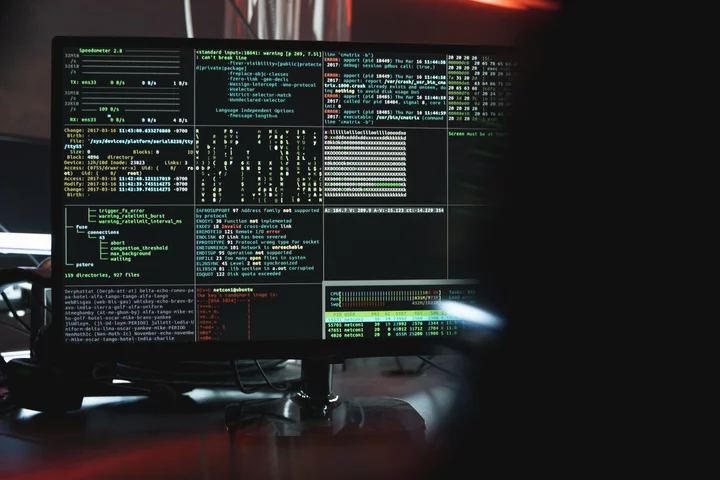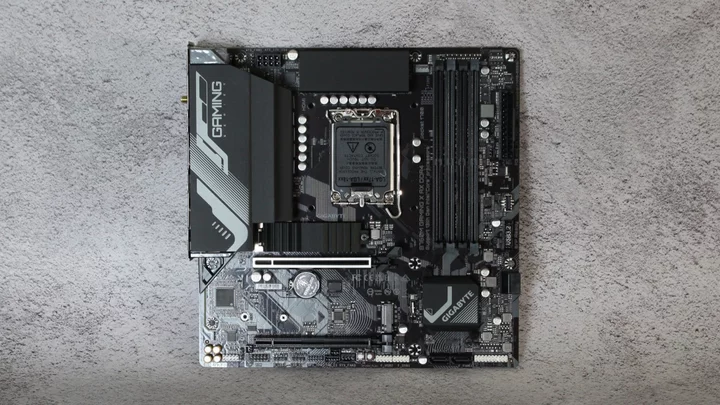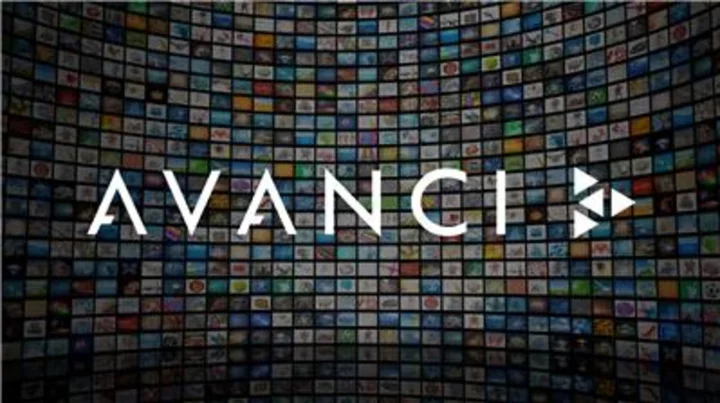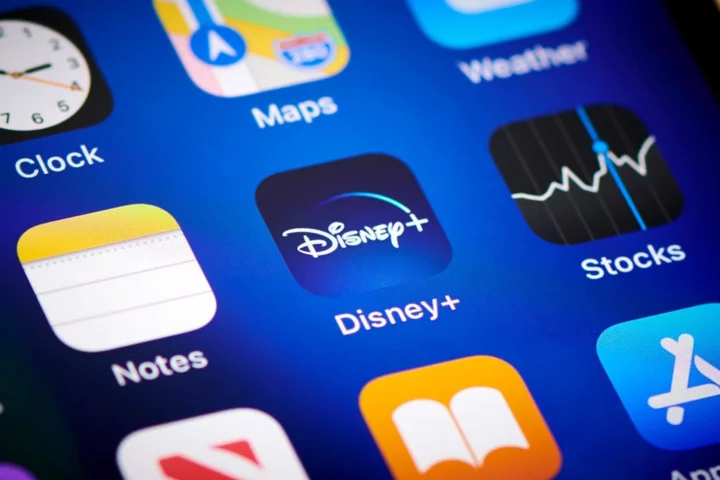
What happened to MrBeast's ex-editor Matt Turner? Here's what he is up to
Matt Turner started a custom rug shop and took part in a reality show after his stint with MrBeast
2023-06-04 16:45

Chinese hackers breached US ambassador to China's email account
China-based hackers breached the email account of US Ambassador to China Nicholas Burns as part of a recent targeted intelligence-gathering campaign, three US officials familiar with the matter told CNN.
2023-07-21 04:18

Five New EV Models Drive Up North American Factory Production
There’s one big reason EVs are getting slightly cheaper: More of them are rolling off production lines. North
2023-05-10 20:24

10 of the best Python courses you can take online for free this month
TL;DR: A wide range of online Python progamming courses are available to take for free
2023-08-03 12:24

Save on a 'Star Wars Jedi: Survivor' Xbox bundle, plus more gaming deals this week
UPDATE: May. 9, 2023, 5:00 a.m. EDT This list has been updated with the latest
2023-05-09 17:56

Amazon Celebrates Prime Members With More Deals Than Any Past Prime Day Event
SEATTLE--(BUSINESS WIRE)--Jul 6, 2023--
2023-07-06 13:26

10 of the best online ethical hacking courses you can take for free this week
TL;DR: A wide range of ethical hacking courses are available for free on Udemy. Hacking
2023-05-19 12:28

ChatGPT update allows anyone to make their own personalised AI assistant
OpenAI has unveiled a major new update for its popularAI chatbot, allowing anyone to create their own personalised version of ChatGPT. The purpose-built artificial intelligence is “designed for flexibility”, according to the company, allowing people to create anything from an AI-powered holiday planner, to a voice-controlled DJ. “Eventually you’ll just ask the computer for what you need, and it’ll do all of these tasks for you,” OpenAI chief executive Sam Altman said during a keynote speech at the firm’s first developer conference in San Francisco on Monday. Users will be able to publish their unique versions of the AI bot onto a marketplace called the GPT Store, where other users can download and use them. The new feature is one of several new abilities of the viral AI chatbot, with its training data now running until April 2023 instead of the previously limited version whose knowledge ended in 2021. “We really believe that gradual iterative development is the best way to address the safety challenges of AI,” Mr Altman said. “We think it’s especially important to move carefully towards this future.” The tech boss also revealed that ChatGPT now has more than 100 million weekly active users, including two million developers who use the platform. The updates come amid growing competition from other tech firms like Google and Meta, which have launched their own versions of the AI chatbot in the year since ChatGPT was released. The most recent arrival is Grok, launched over the weekend by Elon Musk’s new artificial intelligence startup xAI. Mr Musk claims that his AI chatbot – which is currently only available for paying subscribers of X (formerly Twitter) in the US – can outperform its rivals in certain areas due to real-time access to data from the social media platform. “Grok is designed to answer questions with a bit of wit and has a rebellious streak, so please don’t use it if you hate humour,” a blog post introducing the new AI noted. “A unique and fundamental advantage of Grok is that it has real-time knowledge of the world via the X platform. It will also answer spicy questions that are rejected by most other AI systems.” Read More 10 ways AI will change the world – from curing cancer to wiping out humanity How Elon Musk’s ‘spicy’ Grok compares to ‘woke’ ChatGPT ChatGPT and other chatbots respond to emotions, report says ‘Is AI dangerous?’ UK’s most Googled questions about artificial intelligence
2023-11-07 19:29

Gigabyte B760M Gaming X AX DDR4 Review
Who needs DDR5? The Gigabyte B760M Gaming X AX DDR4 is a budget-oriented motherboard that
2023-06-18 06:21

Meta responds to Elon Musk’s lawsuit threat as Threads becomes most rapidly downloaded app
Meta has responded to Elon Musk’s lawsuit threat against its new platform Threads saying that none of the staff working on the app are former Twitter employees. On Thursday, Twitter threatened Meta with legal action over its new social media app Threads, claiming it is a “copycat” platform it built by hiring former Twitter staff. Since its roll out, Meta’s text-based platform built in partnership with Instagram, has racked up tens of millions signups, seemingly becoming the most rapidly downloaded app ever and the most popular Twitter alternative yet. Just hours after its launch, however, Twitter attorney Alex Spiro sent a letter to Meta chief Mark Zuckerberg arguing that his company was guilty of “systematic, willful, and unlawful misappropriation of Twitter’s trade secrets and other intellectual property”, according to Semafor. “Twitter intends to strictly enforce its intellectual property rights, and demands that Meta take immediate steps to stop using any Twitter trade secrets or other highly confidential information,” Mr Spiro said in the letter. “Twitter reserves all rights, including, but not limited to, the right to seek both civil remedies and injunctive relief without further notice to prevent any further retention, disclosure, or use of its intellectual property by Meta,” the attorney added. Mr Spiro alleged that Meta hired dozens of former Twitter staff who “had and continue to have access to Twitter’s trade secrets and other highly confidential information”. He said “Meta’s copycat ‘Threads’ app” was built with the “specific intent” that they use “Twitter’s trade secrets and other intellectual property “in order to accelerate the development of Meta’s competing app”. The attorney argued that this was “in violation of both state and federal law as well as those employees’ ongoing obligations to Twitter”. Andy Stone, Meta’s communications director, responded to the claims on Friday saying that the Threads engineering team does not have any former Twitter employee. “To be clear: No one on the Threads engineering team is a former Twitter employee – that’s just not a thing,” Mr Stone wrote on Threads. Mr Musk reponded to Twitter threatening Meta with a lawsuit saying: “Competition is fine, cheating is not.” Read More What is Threads? All your questions about Meta's new Twitter rival, answered. Threads is already more than three times bigger than every Twitter rival combined I tried Mark Zuckerberg’s Twitter rival, Threads – I’m not impressed Mark Zuckerberg accused of hypocrisy for shielding children’s faces in Instagram post Kim Kardashian, Rylan Clark and Dalai Lama among those joining new app Threads Twitter threatens legal action against Meta over new ‘Threads’ app
2023-07-07 12:21

Charge 4 devices at once with this $26 charging station
TL;DR: As of September 19, you can get a 4-in-1 30W power station for just
2023-09-19 17:56

Google-backed Anthropic startup upgrades its Claude AI, better at coding
By Jeffrey Dastin and Stephen Nellis Anthropic, an artificial intelligence startup backed by Google, on Tuesday widened consumer
2023-07-11 21:58
You Might Like...

Maui children face grief, destruction as schools start up after wildfire

OpenAI unlikely to offer board seat to Microsoft, other investors - source

Avanci Broadcast welcomes ADTH as a Licensee

Surfaceink Qualified as an Authorized Test Lab for Alexa

EV maker Rivian takes bold bet with higher-priced vehicles amid heating competition

'Browse With Bing' Disabled on ChatGPT Plus Because It Bypassed Paywalls

Disney Plus and Hulu price increases are coming. How to avoid them

Footage captures image of an 'odd figure' on the surface of the Moon
